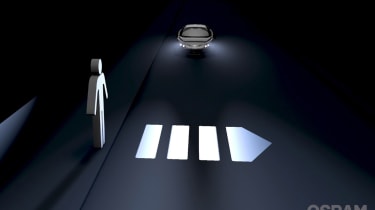Adaptable headlights could improve road safety by 2020
Continental’s LED headlights automatically change shape and beam strength, with hologram projections also in the works

In the future, car headlights could automatically highlight pedestrians and other vulnerable road users to drivers, and even project crossings and warning signs on the road to help reduce accidents.
Tech giant Continental is working with light specialist Osram to build the next generation of vehicle lights. Fully adaptable LED lights that automatically change their shape and beam strength in different driving settings, as well as matrix and laser lights that project hologram-like projections on to the road, are currently under development.
• What are LED daytime running lights?
Osram’s latest Eviyos technology uses a new form of pixelated LED light to create a fully adaptive lighting system that’s integrated into sensors around the car. This is designed to improve on existing adaptive LEDs.

“As an example, a black pixel can be introduced to the LED beam to stop the light from hitting specific windows on buildings the car is passing, while increasing the beam on other parts, such as pedestrians crossing [when driving in urban areas],” explained Annette Hebling, product marketing manager for Continental.
This next-generation LED technology is expected to launch in 2020 with Continental saying we could see the technology in cars “pretty soon” after.
The company is also working with Osram to develop lights that interact with pedestrians and other road users, using matrix and laser light technology already found in some premium models.
Hebling added: “With cars that are able to recognise pedestrians, the new light technology will eventually be able to project images such as crosswalks for them if they are crossing the road.”
Continental says the projection technology will be important for autonomous cars that will need to communicate with other road users.
Take a look at other technologies which could help reduce road accidents in the future…
Find a car with the experts


